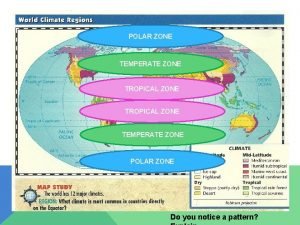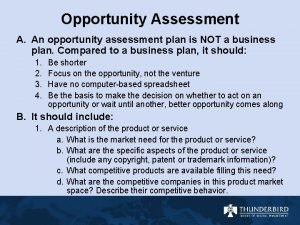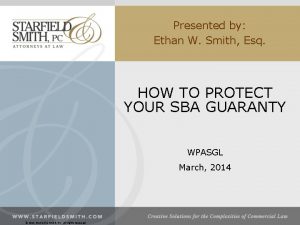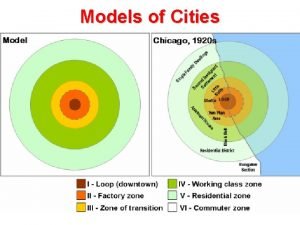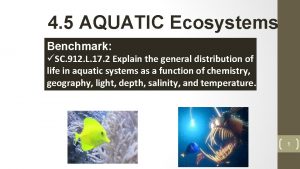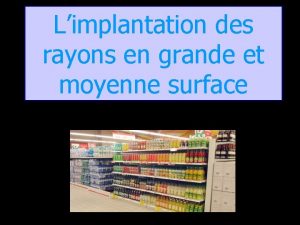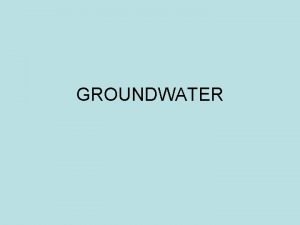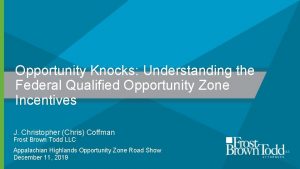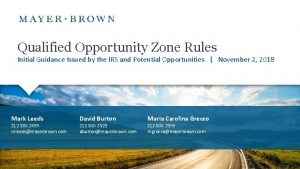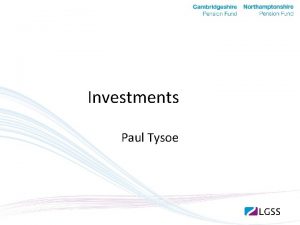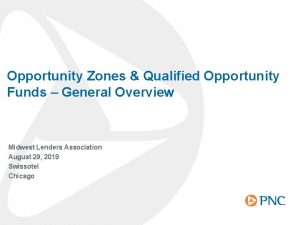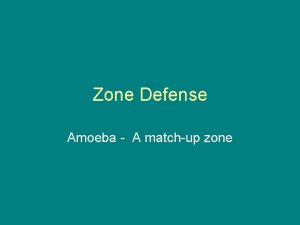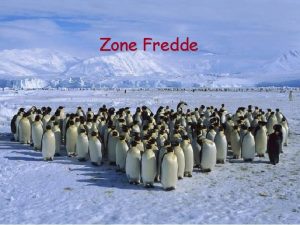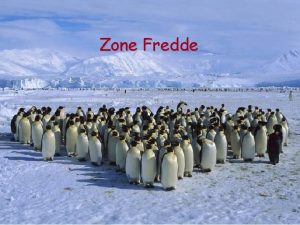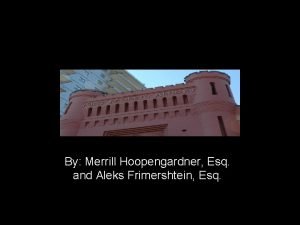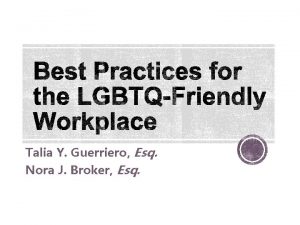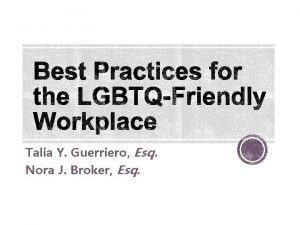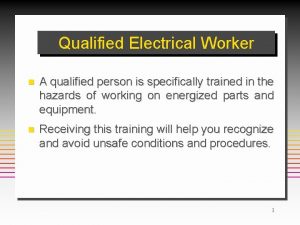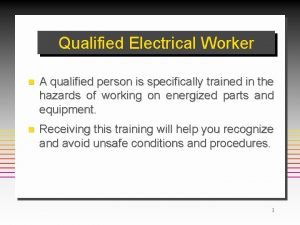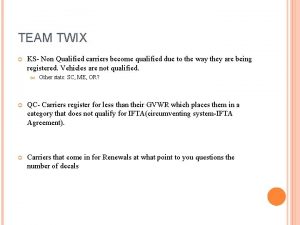Qualified Opportunity Zone Investments Scott Neill Esq Scott






















- Slides: 22

Qualified Opportunity Zone Investments Scott Neill, Esq. Scott. Neill@kutakrock. c om (402) 231 -8987 1650 Farnam Street Omaha, NE 68102 (402) 346 -6000

Key Aspects of The Opportunity Zone Program* *Section 1400 Z-2 of the Internal Revenue Code of 1986, as added pursuant to the Tax Cuts and Jobs Act of 2017 (“OZ Provisions”). The first set of Proposed Regulations (REG – 115420 -18) and Reserve Ruling 2018 -29 were issued on October 19, 2018 clarifying certain aspects of the OZ Provisions and the second set of Proposed Regulations (REG – 120186 -18) were issued on April 17, 2019 (collectively, “OZ Guidance). It is unclear if a third set of Proposed Regulations will be issued.

Today’s Topics: • Why Invest? • Opportunity Zone Benefits- “The Big Three” • Qualified Opportunity Funds (“QOF”) • Formation and Requirements • What types of Property must a QOF acquire? • Qualified Opportunity Zone Property • How are Investments Structured? • Direct and Indirect Investments • What is a Qualified Opportunity Zone Business (“QOZB”)? • Formation and Requirements • Now that you have a QOZB, what do you have to do with the money? • Qualified Opportunity Zone Business Property • What types of Developments and Projects are authorized? • New construction vs. rehabilitation • Combining Opportunity Zone Investments with Other Tax Incentives • Structuring and Flexibility • Opportunity Zone Investment Example • Opportunity Zone Regulations / Clarifications • Where are the Nebraska Opportunity Zones 1

Qualified Opportunity Zone Benefits The Big Three Taxpayers, including taxpayers receiving allocated capital gains from Partnerships, get capital gains tax deferral & forgiveness of certain capital gains 1 for making timely investments in Qualified Opportunity Funds (QOFs) which subsequently invest in Qualified Opportunity Zone Property (QOZP) 1. Deferral of 100% of Original Capital Gain until the earlier of: • Sale of QOF investment, or • December 31, 2026 [this date is mandated for all Opportunity Zone Investments by the Statute] 2. Partial Forgiveness of Original Capital Gain depending on length of investment in QOF: • 10% if investment in QOF held for at least 5 years • 15% if investment in QOF held for at least 7 years 3. Basis Step Up in QOF investment to shield potential new gains on investment in QOZP • Increase in tax basis of QOF investment to FMV if investment in QOF held for at least 10 years • Ability to benefit from basis increase for all qualified investments made prior to June 30, 2027 • Investors permitted to hold investment until December 31, 2047 1 OZ Guidance clarified that only capital gains are eligible for tax deferral and forgiveness and that a QOF cannot utilize borrowed funds to make qualified investments

Qualified Opportunity Fund (QOF) • Statutory Requirements for QOF • Fund Purpose Statement – The organizational documents of the entity (a partnership or corporation) must include a statement that it was formed as “an investment vehicle organized for the purpose of investing cash proceeds in QOZP” • Generally a QOF can cheaply and easily be formed as either of a Nebraska corporation, a Nebraska limited partnership or Nebraska limited liability company • Certification Process with IRS • Certification Process has been determined by Treasury to be “Self-Certification” by the filing of Form 8996 with IRS • QOF chooses the first month in which it will be treated as a QOF. If not chosen then first month will be first month of taxable year 2 • QOF must certify to its “purpose statement” on Form 8996 • Fund Assets Test – The QOF must hold 90% of its assets in QOZP 3 • Noncompliance Penalty • The QOF can be penalized on a per month basis if it fails to meet the 90% test 4 • The penalty can be waived if the QOF can show the IRS that the reduction in investment was due to a reasonably unexpected cause 5 • The amount of the penalty is determined by the percentage shortfall below 90% multiplied by the federal short term under payment rate plus 3% 2 This affects calculation of the Assets Test and Non-compliance Penalty discussed below This is determined by the average of the QOZP held on (i) the last day of the first six-month period of the QOF’s taxable year, and (ii) the last day of the QOF’s taxable year. However, if less than 6 months remains in the taxable year, than test is only used at the last day of QOF’s taxable year (no averaging). 4 OZ Guidance clarified that all QOFs have 6 months to meet the 90% test starting from the date such gains are contributed to the QOF and that if a QOF receives proceeds related to a QOZP back, that it must reinvestment such proceeds in QOZP within 1 year and such funds must not violate NQFP in the meantime. 5 Similar to the “reasonable expectations” test in NMTC. 3

Types of Investment in Qualified Opportunity Zone Property (QOZP) Qualified Opportunity Fund QOF acquires 1 or more of the Below Items of Property Qualified Opportunity Zone Partnership Interest Qualified Opportunity Zone Business Property Qualified Opportunity Zone Stock

INVESTMENT STRUCTURES • Indirect: • In these structures the QOF invests in another entity (a partnership or corporation) which is the business entity which constructs, rehabilitates and/or operates a Qualified Opportunity Zone Business • The QOF will use the investment dollars to acquire a Qualified Opportunity Zone Partnership Interest or Qualified Opportunity Zone Stock in this business entity • Direct: • In these structures the QOF is the business entity and invests directly in tangible property (e. g. equipment, structures and machinery) to be used in the operation of the business • The QOF will directly purchase this Qualified Opportunity Zone Business Property and will construct, rehabilitate and/or operate the business

Requirements for the Acquisition of Qualified Opportunity Zone Property (QOZP) • The QOF’s purchase of, or investment in, QOZP must occur after December 31, 2017 in exchange for cash; • QOZP which consists of the acquisition of stock or a partnership interest, will only satisfy the Statute if the interest are in a qualified opportunity zone business, or a business which is being organized for the purpose of being a qualified opportunity zone business (collectively, a QOZB); and • QOZB must qualify as a QOZB for substantially all of the QOF’s holding period.

What is a Qualified Opportunity Zone Business? Any trade or business in which substantially all 5 of the tangible property owned or leased by the taxpayer is Qualified Opportunity Zone Business Property (QOZBP) and: • At least 50% of income of the QOZB must be derived from active conduct of a trade or business (Business Operations) • Substantial portion (70%) of the QOZB’s tangible property must be Qualified Opportunity Zone Business Property and be used in the Business Operations [thus a QOZB may have some “bad” assets/tangible property] • QOZB must maintain less than 5% of its unadjusted basis in property which is nonqualified financial property 6 • Reasonable Working Capital does not count against the 5% limitation. • Construction, operations and/or acquisition funds retained by a QOB will be deemed to be “reasonable amounts of working capital” for up to 31 months 6 if: • such funds are actually used and designated for construction/acquisition/operations • pursuant to a written schedule consistent with normal business practices • working capital use consistent with designated uses and schedule • Certain “sin businesses” do not qualify 8 5 6 OZ Guidance clarified that substantially all means seventy (70%) percent Same test as NMTC test. 7 OZ Guidance clarified that all businesses can use 31 month rule for use of capital as long as a plan exists for such use; further, such 31 months can be extended if delay caused by government delays. 8 Same test as NMTC test (private or commercial golf course, country club, massage parlor, hot tub facility, suntan facility, racetrack or other facility used for gambling, or any store the principal business of which is the sale of alcoholic beverages for consumption off premises).

Key Requirements for Qualified Opportunity Zone Business Property (QOZBP) Must be tangible property used in Business Operations • Acquired by purchase from an unrelated party (the seller must not hold more than 20% of the interest in purchaser) after December 31, 2017 • During substantially all of the holding period, substantially all of the use of the tangible property is within a QOZ • Original use of the property • must be in a QOZ and must start with the taxpayer, or • Taxpayer substantially improves the property 7 • Land not subject to original use requirement per OZ Guidance 7 During any 30 -month period after acquisition, additions to basis (other than basis in land) exceed an amount equal to the adjusted basis of such property at the beginning of such period.

QOZB Safe Harbors – 50% Gross Income 4 different ways to satisfy whether 50% of Gross Incomes from Active Conduct of a Trade or Business: • 50% of Hours – Measured by employee/independent contractor hours in the Opportunity Zone • 50% of Amounts Paid – Measured by amounts paid to employees/independent contractors in the Opportunity Zone compared against total amount paid • 50% of Tangible Property – the tangible property of the trade or business located in the Opportunity Zone and the management or operational functions performed in the Opportunity Zone are necessary to generate 50% of gross income 5 • Facts and Circumstances – based on the facts and circumstances of the trade or business, a showing that 50% of gross income is derived from the Opportunity Zone 5 These rules are designed to assist service businesses located in an opportunity zone but make sales outside of the opportunity zone

Potential Investment Types in Opportunity Zones • Construction & Development of Commercial Real Estate • Development & Substantial Renovation of Existing Property in Opportunity Zone • The creation of a new business in a Opportunity Zone • Expansion of Existing Business in a Opportunity Zone • Importantly, many practitioners and business people believe the upcoming additional regulations will provide additional guidance to make investment easier and more flexible

Combining Zone Investments with Other Tax Incentives The Opportunity Zone Program is “flexible” and permits layered subsidy and can be combined easily with many federal, state and local incentives: • • • Tax Increment Financing Bond Financing State and Local Development Grants/Soft Loans Low-Income Housing Tax Credit Historic Rehabilitation Tax Credit New Markets Tax Credit Renewable Energy Tax Credits State Tax Credit Programs (where applicable) Other state and federal loan and grant programs

Opportunity Zone Investment Example January 2, 2018 • Taxpayer enters into a sale of property that results in $1 M of capital gain • June 30, 2018 (which is within the 180 day requirement), the Taxpayer contributes cash equal to the entire $1 M of capital gain to obtain an interest in the Qualified Opportunity Fund • Qualified Opportunity Fund invests the $1 M in a Qualified Opportunity Zone Property (stock, partnership interest, business property) • REMINDER: Taxpayer is deemed to have a $0 basis in its Qualified Opportunity Fund investment to retain taxability. • NOTE: The cash used to make Qualified Opportunity Fund investment does not need to be traceable to original gain transaction.

Opportunity Zone Investment Example continued • June 30, 2023 • After 5 years, the Taxpayer’s basis in the Qualified Opportunity Fund investment is increased from $0 to $100 k • June 30, 2025 • After 7 years, Taxpayer’s basis in the Qualified Opportunity Fund investment is increased a further $50, 000 (from $100 k to $150 k) • December 31, 2026 – NOTE: Statutory deadline for all gains to be triggered (required taxable event) • $850 k of the $1 M of deferred capital gains are taxed and the basis in Qualified Opportunity Fund investment increases to $1 M • It is hoped that this deadline will be amended to be a rolling 7 year deadline determined by the year of investment

Opportunity Zone Investment Example continued • June 30, 2028 • After 10 years, Taxpayer sells its investment for $2 M • Taxpayer’s basis in the Qualified Opportunity Fund investment is deemed by statute to be equal to current market value after 10 years • The effect is no tax on unrealized appreciation of the original investment in the Qualified Opportunity Fund (avoids gain on the new $1, 000 created by the unrealized appreciation of the original investment) • After 25 years, 8 Taxpayer sells its investment for $5 M • Taxpayer’s basis in the Qualified Opportunity Fund investment is deemed by statute to be equal to current market value at time of sale • The effect is no tax on unrealized appreciation of the original investment in the Qualified Opportunity Fund (avoids gain on the $4, 000 created by the unrealized appreciation of the original investment. 8 The result is the same if the investment is sold on or before December 31, 2047

Additional QOF Clarifications and Rules • Exits / Sales / Transfers • OZ Guidance clarified that Fund can sell its interest in QOZB and the Investor may remain eligible for benefits if reinvestment is timing made • Allows for multi-asset QOFs since individual assets can be sold without loss of benefits • However, note that this only works with the “Indirect” investment structure (you cannot sell building or project if the Fund is the direct owner of the building) • OZ Guidance clarified that taxpayer can sell its interest in QOF to another investor as long as such purchaser has sufficient gains and meets all other tests • This may help create a secondary market for QOFs • OZ Guidance clarified that upon taxpayers death, family steps into shoes of taxpayer • This does not apply to gifts or other transfers • Taxpayer cannot refinance its interest in a QOF within 2 years of acquiring its QOF interest • This does not apply to gifts or other transfers

Additional QOF Clarifications and Rules Continued • Exits / Sales / Transfers • Depreciation Recapture on Exit– Generally no; as long as 754 election is made on exit • Value of Fund Interest in 2026 -Recent OZ Guidance reflects the IRS position that the fair market value of your interest cannot be less than outstanding debt attributable to the interest • Fund Distributions (be careful!)-OZ Guidance clarified distributions follow NMTC rules • Distributions to partners generally cannot exceed profits unless a debt refinancing is done (this will allow a Fund Investor to pull out cash from the Fund after 2 years by replacing the cash with debt liability) • for multi-asset QOFs since individual assets can be sold • However, cannot sell building or project if QOF is QOZB • OZ Guidance clarified that taxpayer can sell its interest in QOF to another investor as long as such purchaser has sufficient gains and meets all other tests • This creates a secondary market for QOFs

Additional QOZB Clarifications and Rules • Active Business Requirement / Master Lease • Leasing activity is considered the active conduct of a trade or business; however, merely entering into a triple-net lease is not the active conduct of a trade or business • Since, “triple-net lease” is not defined in the Code (and since various interpretations exist), you must look at the facts and circumstances to determine if the QOZB will be considered “active” if its sole business is renting the entire property under a single lease. • Property Considerations • Original Use - Vacant buildings can be considered “new” if vacant for at least 5 years • Leased Property – property can be purchased or leased as long as leased property is at market rates and no below market purchase options exist • Related Party Leases – these are ok; as long as no prepaid rent (in excess of 12 months) and QOZB must also purchase property equal to the value of the leased property within 30 months • Substantial Improvements – no requirement to substantially improve property acquired through lease from an unrelated party

Where are the Opportunity Zones? • https: //www. cdfifund. gov/Pages/Opportunity-Zones. aspx • https: //www. cims. cdfifund. gov/preparation/? config=config_nmtc. xml

Where are the Nebraska Opportunity Zones? 21

Scott is a partner in the firm’s Omaha office and is a leading member of the firm’s tax and tax credit practice. He also focuses on new markets tax credits, opportunity zone finance, historic rehabilitation tax credits, state tax credits and renewable energy tax credits, as well as other related state and federal financing products. Scott has experience representing institutional lenders, banks, syndicators, investment funds, developers and state agencies in the acquisition, disposition and financing of a variety of properties including residential housing, shopping and retail centers, health care facilities, industrial facilities and office and mixed-use buildings. In addition, he routinely serves as workout counsel to financial institutions and has been involved in the restructuring and recapitalization of distressed tax incentivized developments and properties.
 Temperate zone latitude
Temperate zone latitude Neritic zone climate
Neritic zone climate Source zone transition zone and floodplain zone
Source zone transition zone and floodplain zone Scott neill kutak rock
Scott neill kutak rock Opportunity assessment plan
Opportunity assessment plan Adam smith esq
Adam smith esq Gregory b jordan esq
Gregory b jordan esq Novogradac opportunity zone conference
Novogradac opportunity zone conference Opportunity zone
Opportunity zone Burgess theory
Burgess theory What is the conducting zone of the respiratory system
What is the conducting zone of the respiratory system Photic zone and aphotic zone venn diagram
Photic zone and aphotic zone venn diagram Climate and latitude
Climate and latitude Zone chaude zone froide magasin
Zone chaude zone froide magasin Conducting zone vs respiratory zone
Conducting zone vs respiratory zone Water table chart
Water table chart Zone 1 and zone 2
Zone 1 and zone 2 Respiratory system zones
Respiratory system zones Zone of aeration and zone of saturation
Zone of aeration and zone of saturation Linda o'neill unbc
Linda o'neill unbc Eugene oneil
Eugene oneil Sources nso july frenchhowell neill technology...
Sources nso july frenchhowell neill technology... Deborah neill
Deborah neill
